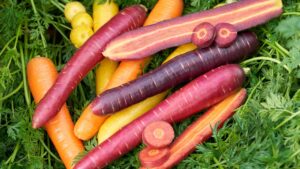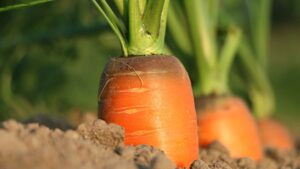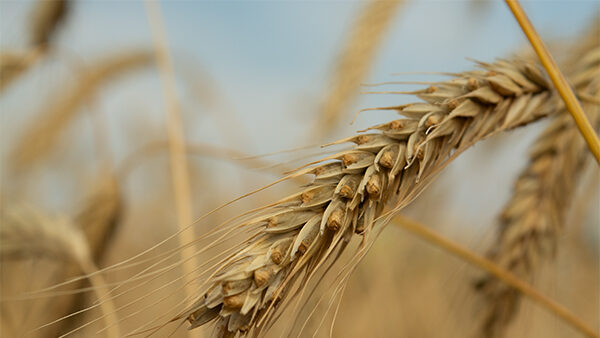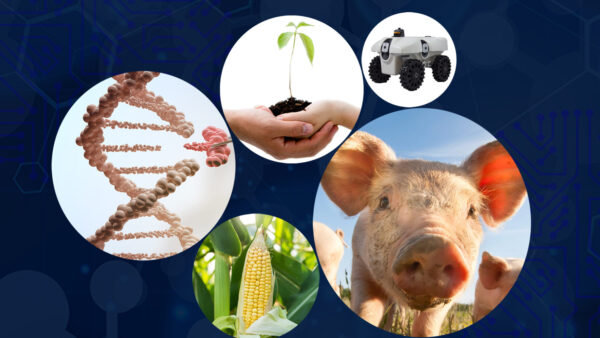As consumers are encouraged to eat more colorful plates, breeders are rising to the challenge.
There’s a plethora of different colored foods out on the marketplace. Think about all the different colors that you could eat in a day: red apples, orange carrots, yellow bananas, green kiwis, blue blueberries… even purple tomatoes. And while there are a lot of different colored options on the market, color is becoming a bigger trend in the fruits and vegetable world.
As you start to see more colors in the grocery store, part of this new breeding trend stems from a new food educational stance — a lot of students are learning that they need to “eat the rainbow” to have a healthier diet.
“Eat the rainbow creates a really positive association with fruits and vegetables, which are the foods that add the most color to our plates,” says Lily Sheridan, the farm to school coordinator at Cooking With Kids. “They’re also the foods that are the most lacking in the American diet. Saying eat the rainbow also gives kids an easy set of instructions to try and incorporate all the colors into their diet throughout the day.”
Red, orange, yellow, green, blue and purple foods also all bring in different vitamins and minerals into diets to create a more balanced and nutrient-dense way of eating, Sheridan adds.
“That’s all in just three words — it’s really powerful, it packs a punch and it’s quite an effective way for parents to encourage their kids to eat more fruits and vegetables,” she says.
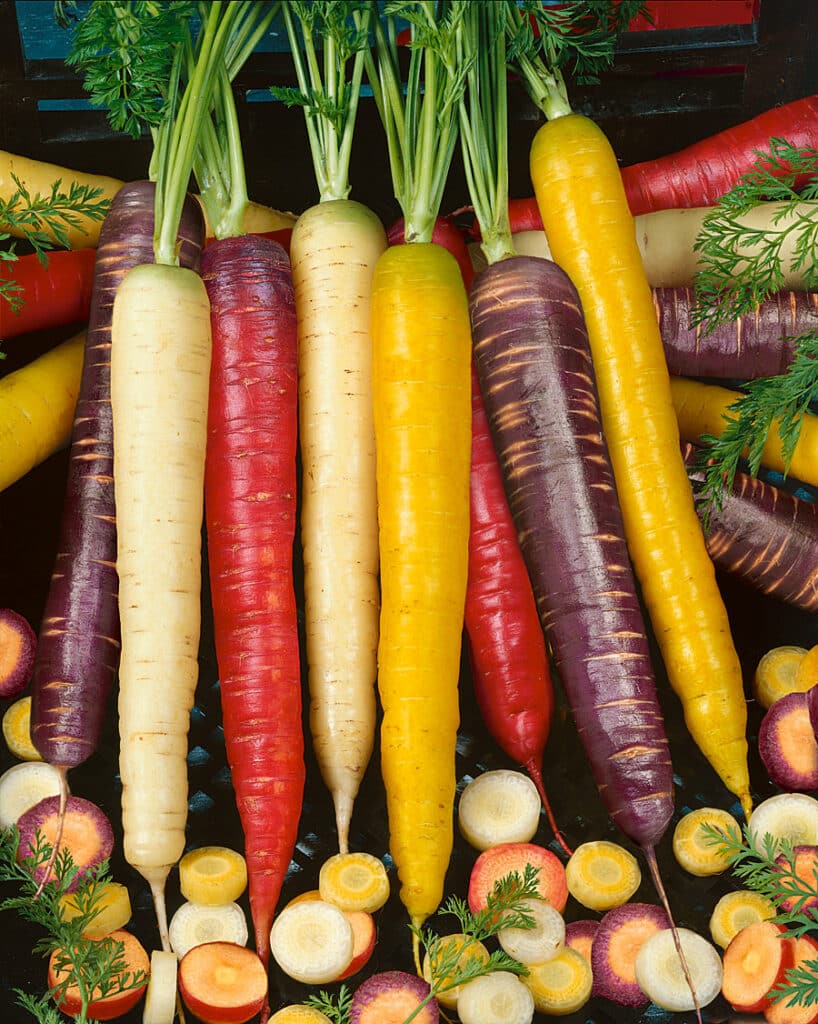
And as experts, like Sheridan, work more closely with students and children to encourage healthier eating habits through eating the rainbow, breeders are looking to tackle the task as well.
If you think about today’s market in comparison to the vegetable market 10 years ago, there’s a lot more color varieties on the market. You can have purple and red carrots, purple and yellow tomatoes, purple leafy greens, yellow kiwis, pink pineapple and more.
“Ten years ago, the only carrot you ever saw on the grocery store was an orange carrot,” Patty Buskirk, managing partner and plant breeder at Seeds by Design, says. “Now you can walk in and find a white carrot, a purple carrot, a red carrot, and all of a sudden, now you’re eating a rainbow of carrots. Each one of those carrots offers a different nutrient value as well.”
Typically, orange carrots have a high carotene level, whereas purple carrots have a high anthocyanin level and red carrots have high lycopene levels, Buskirk adds. The same trend has been seen in other vegetables as well.
“We as breeders are just reacting to what the market wants — ingenuity,” Buskirk says. “They want something creative and something that’s different. They want to eat and experience food at home out of their gardens.”
For plant breeders working specifically towards the home garden seed market as well, those colors have been in demand not only for eating, but to have something fun to grow as well.
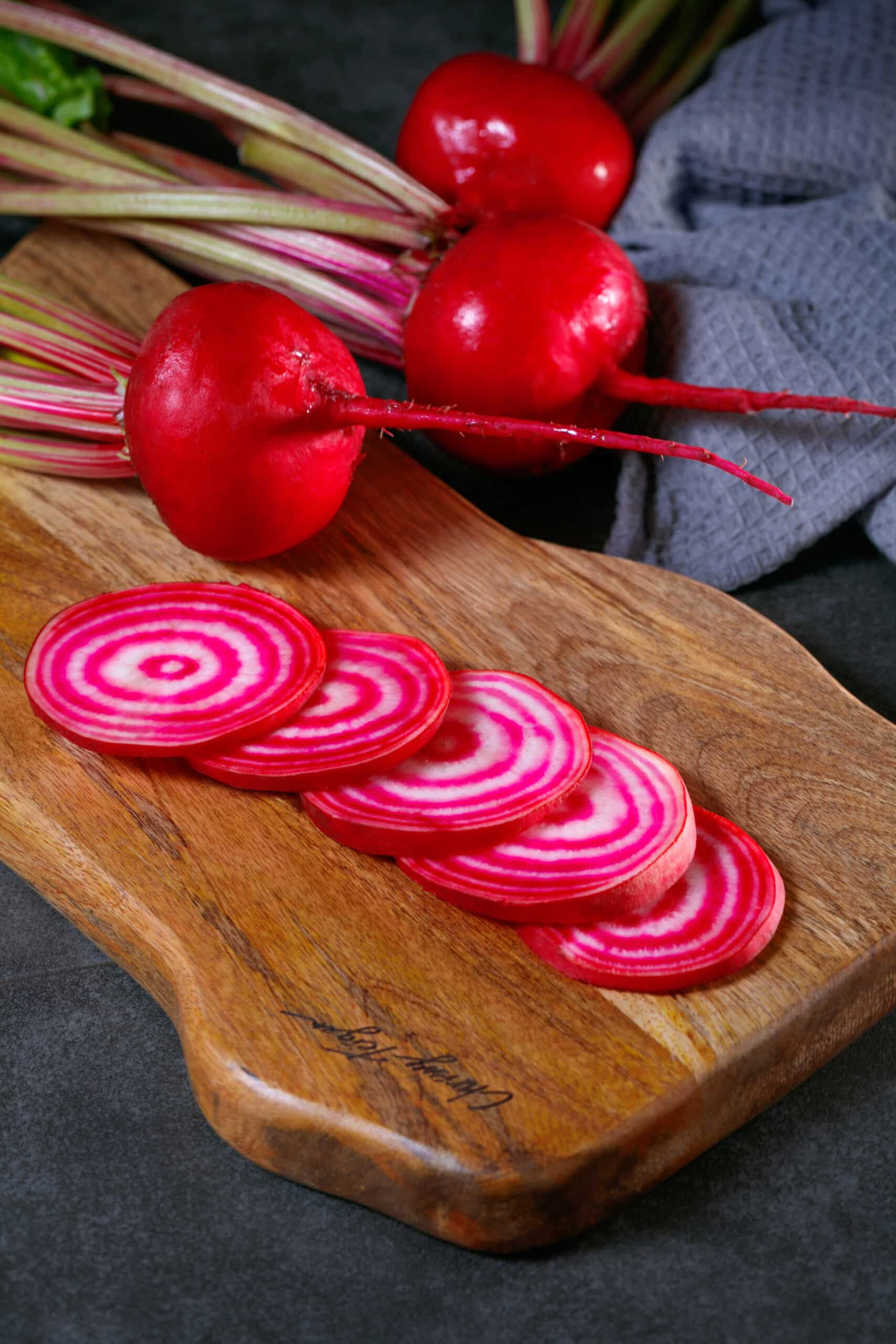
In comparison, the more professional market, while the range of color might not be as large, color’s becoming an increasingly more important trait, says Laura Ann Diehl, Pacific Northwest research manager and plant breeder for table beet at Sakata Seed America.
“First and foremost, color is the first thing that a customer or a grower notice about a product — it conveys a lot of feelings,” Diehl says. “For a consumer, you might notice or think ‘Wow, this taste must be richer than other pieces of fruit that are a bit lighter in color.”
Though range might not be top priority for her, finding that right depth of color to meet consumer and grower expectations is important.
Traits like yield and disease resistance are still top-of-mind, and without the right look, vegetables might not be accepted.
“It’s a funny balance in vegetables — you can produce a product with amazing resistance, and a grower or dealer will look at it and say the color’s wrong,” Diehl says. “It’s really equally important.”
Did you miss our full conversation where we dive into why consumers are drawn to more colorful produce? Make sure to listen to the full panel at:


